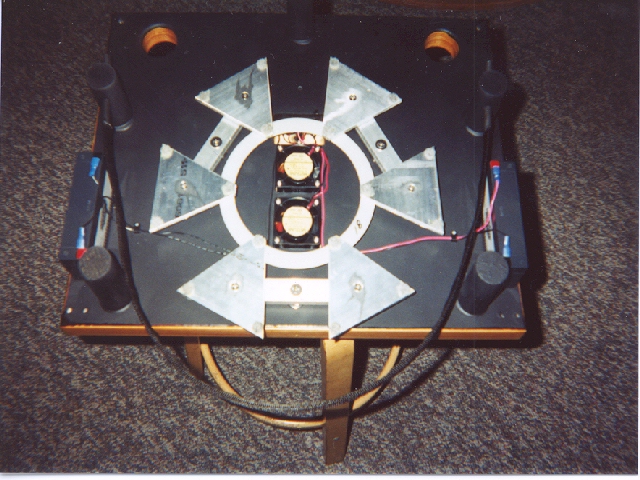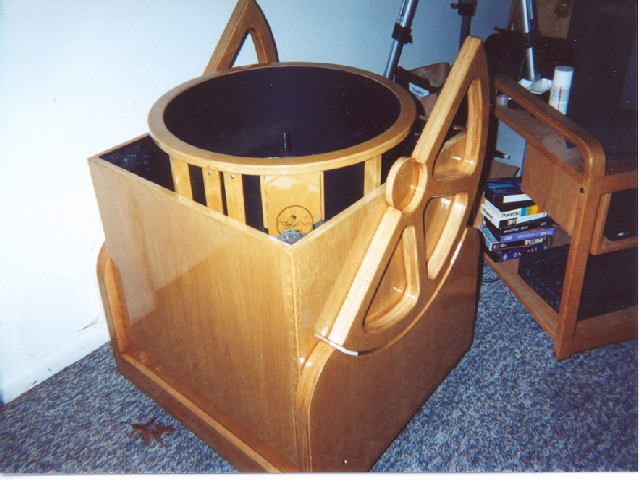|
This is a photo of the completed mirror cell, sitting on a bar stool (the cell is rectangular; the chair accounts for the stuff at the bottom of the picture). The mirror cell is double-thickness baltic birch, which I am told is lighter than the steel frame that Obsessions and some others use; weight here isn't really a concern, but ventilation certainly is, so as long as I see the mirror cooling down in a reasonable amount of time (so far so good) I'm happy. This has standard 18-point flotation, so support is good, and collimation is (of course) easy and tool-free. The two muffin fans seem to do a good job at providing vibration-free ventilation; you can see the two 6v gelcells (for a total of 12v) on either side of the stainless steel mirror sling. The fan switch and a charging port are nicely mounted on the back side, and aside from the mirror shifting from side-to-side on its supports whenever I transport the scope (necessitating a manual recentering every time I set up), I'm happy with the thing. |
|
|
Here is the completed scope (actually it's a dry run for the purposes of the picture -- the mirror isn't in yet and the inside of the rocker box hasn't yet been painted flat black), all packed up and ready to travel. The mirror/rocker box combination for these scopes is very solid and a couple of inches larger than it needs to be, primarily so that the secondary cage will fit inside for storage and transportation. The extra size probably helps with tube (box?) currents and general ventilation as well. The filter slide is clearly visible on the side of the cage closest to the camera; the fit inside the mirror box is snug, and in order to fit the cage inside one needs to remove one of the lower clamp knobs to make room for the focuser. I store the clamp knob in one of my eyepiece accessory cases, so it's no problem. I added the two strips of wood on the cage, to the left of the focuser board/filter slide, for the purposes of mounting my 80mm finder, but I have since removed them & mounted the finder 1/2 way up the truss poles. Otherwise it was too top heavy, and I found that having to climb the ladder to use the finder was ergonomically very, very wrong. I made a cross-piece out of aluminum stock and bolted a lumicon finder mount to it. I attach it to the truss poles at setup time with a pair of conduit hangers which are permanently attached to the trusses. I'll post some pictures of this arrangement when I can get them scanned in, because it works quite nicely. |
|

